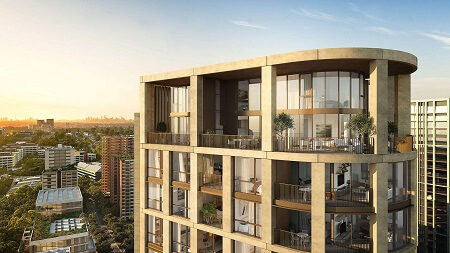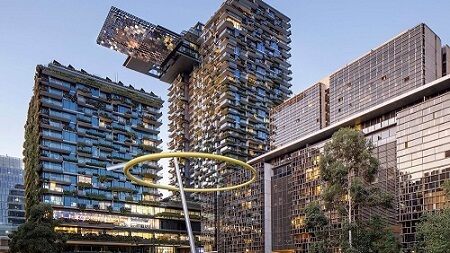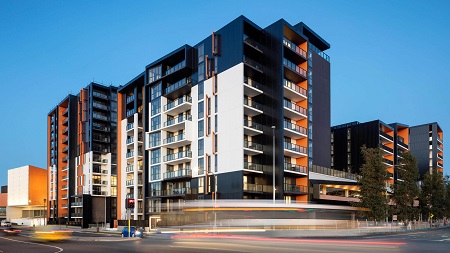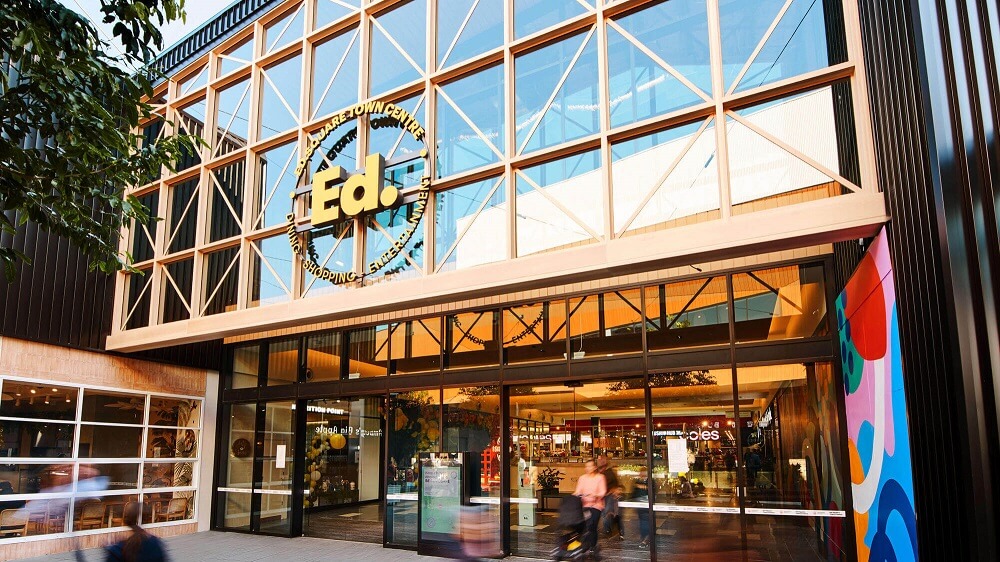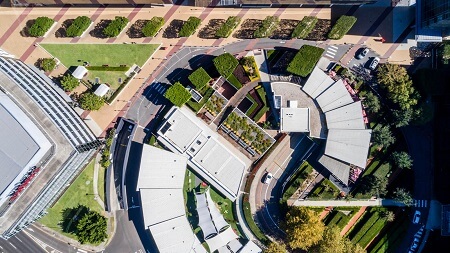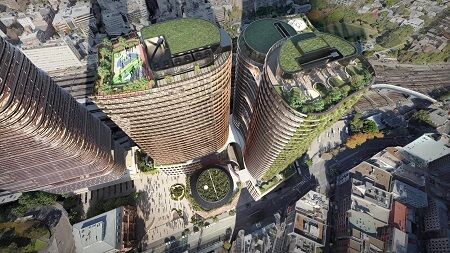100 years proud
In 2024, we’re celebrating 100 years of our Australian property development history. And though it’s not our birthday per se, it is a reflection on a century of experience and lineage that extends from the days of real estate entrepreneur T.M Burke in 1924 to Frasers Property Australia today.
Like any story played out over ten decades, it has its fair share of twists and turns. Major plot points. Colourful characters. Mergers and demergers. Through it all, one thing stayed constant: a desire to create the kinds of places people are still drawn to many generations later.
By all accounts, Thomas Michael Burke was an indefatigable champion of Australian development.
Born near Ararat in 1870 to Irish and Scottish settlers, Thomas worked as a railway clerk as a young man, before founding the Civil Services Co-Operative Society in 1903, a large member-driven cooperative store in Melbourne’s Flinders Street, with several suburban and rural outposts across Victoria. An early advocate for the federation of the colonies, Burke would go on to play a leading role in the country’s first ever ‘Made in Australia’ Exhibition in 1904.
As the country marched to war in the mid 1910s, Burke bought land in the depressed market and turned his hand at subdivision. In the post-war years, he sold those subdivided properties to returning servicemen and their families on nominal deposits and modest terms, spreading the “new gospel” of “8d. a day” to secure a slice of an expanding Australia.
With his new real estate business growing fast, Burke incorporated T.M Burke Pty Ltd in August 1924 with offices across the country, in capital cities and regional centres.
Looking back at the company’s old sales and subdivision plans from this era, two things stand out to me. The first is that it’s clear that Burke had a knack for marketing. His projects extolled the importance of access to the nation’s mass-transit infrastructure, good schools, and fresh air. Some things never change!
The second is the price of land. In the interwar years, it wasn’t uncommon to find a block of land in a T.M Burke development for between £100 - £200 — roughly $10,000 - $20,000 in today’s money. Payments were advertised at £1 a month!
In addition to being a prolific developer of smaller- scale subdivisions, T.M Burke’s company undertook many large projects that set new benchmarks for design and masterplanning. The Merrivale Garden Suburb in Melbourne is one example. In the early 1920s, it was one of the first in the country to emphasise green space, recreation, and walkability. Designed by Saxil Tuxen, a contemporary of Walter Burley Griffen, Merrivale Garden Suburb (today known as the suburb of Reservoir) marked a movement toward working with the topography of the land and balancing the benefits of urbanisation with nature.
Another was the development of Sunshine Beach and Peregian on Queensland’s Sunshine Coast. Burke’s business was heavily involved in the region from 1927 to the 1960s, helping to open up the area, developing key infrastructure including bridges and roads.
Imagine having the opportunity to own a slice of this part of Sunshine Coast paradise for a £10 deposit and £1 a month!
The Hooker Corporation Years
Thomas Michael Burke passed away in 1949. By that time, the company was run by his son, Marcus Burke, who— over the course of the next 20 years or so—progressively sold the family business to L.J Hooker’s development arm, Hooker Corporation.
Between the 1960s and 1980s, Hooker Corporation was one of the largest and most active development companies in Australia. Over the decades, Hooker helped to transform the Gold Coast and Sydney’s northern and southern suburbs, with significant developments in Killarney Heights, Castle Cove, Cherrybrook, Winston Hills, Kogarah, and Maroubra. Hooker Corporation were also responsible for planning and delivering what it called “a developer’s dream”—seven new Brisbane suburbs called the Centenary Suburbs, to house more than 30,000 families, through the 1960s and 1970s. A phenomenal achievement.
Major retail destinations like Sydney’s Warringah Mall and the Gold Coast’s Pacific Fair also owe their beginnings to Hooker’s development prowess, along with scores of commercial buildings and industrial parks in almost every capital city.
Heavily hit by the market crash of the late 1980s, Hooker Corporation was forced to radically restructure. Its land, housing, and apartments division was refinanced by a consortium of banks so that homes and apartments already under construction could be completed.
This move paved the way for the creation of Australian Housing and Land, eventually to be renamed Australand.
The Australand Years
Under the experienced helmsmanship of Managing Director Brendan Crotty, the emergent Australand business quickly demonstrated its capacity for quality development.
By the late 1990s, Australand was delivering a wide variety of residential, commercial, and industrial projects across the country, including Watervale in Melbourne’s west, The Maltings in Perth, Runaway Cove in the Gold Coast, Westlake in Brisbane, and the redevelopment of King Street Wharf in Sydney.
Having built a trusted reputation for delivering large-scale, mixed-use projects, Australand was regularly tasked with taking complex sites in inner urban areas and breathing new life into them.
One of the largest of these was Freshwater Place on Melbourne’s Southbank. Acquired by Australand in 2001, Freshwater Place was built on the site of the old semi-industrial Queensbridge precinct, which had fallen into disuse. Today, thanks to the efforts of Australand, the neighbourhood is a thriving hub of retail, dining, commercial and residential uses as well as a vital link between the CBD and its arts and entertainment precincts.
In Sydney, Australand redeveloped several key sites that would go on to shape the city’s skyline, including Balmain Shores, Paddington Barracks, Henry Deane Plaza and Discovery Point. In a long-running joint venture with the NSW government’s land development agency, Landcom, Australand masterplanned one of the most popular projects in the state’s history: The Ponds. A suburb-sized development in Sydney’s north-west, the more-than 4000 properties of The Ponds sold out within seven years.
In other parts of the country, Australand broke ground on Port Coogee south of Fremantle, launched Shell Cove on the NSW South Coast, and delivered an elegant restoration of historic Yungaba House in Brisbane’s Kangaroo Point.
Over the course of a quarter century, Australand grew to become one of the largest diversified property companies in the country, and an established leader in community creation and sustainability. In 2014, it was bought by global property giant Frasers Property, merged with its existing Australian-based business, and renamed Frasers Property Australia.
Frasers Property Australia
A century of history developing Australia’s towns and cities has deeply informed our purpose: to create stronger, smarter, happier neighbourhoods that promise greater futures. We are, after all, a product of what’s come before us and everything we’ve learned along the way.
The backing of a $40 billion multinational brand with activities in more than 20 countries around the world, puts us in the remarkable position of being able to deliver on that purpose again and again. It affords us the license to try new things, take on complex challenges, and create new opportunities for the Australian housing market.
Notable examples include Australia’s most awarded mixed-use community, Central Park Sydney; the transformation of a post-industrial slice of Brisbane’s Northshore into the exclusive neighbourhood of Hamilton Reach; and the creation of the world’s most sustainable shopping centre at Melbourne’s Burwood Brickworks.
Along the way we’ve also started our own carbon-neutral energy company, Real Utilities, supplying cheaper, greener energy to homes and buildings in Frasers Property communities. Our Property Management business services thousands of rental properties across the country. And our popular customer loyalty program, Frasers Property Care & Rewards, provides dedicated care and assurance, as well as valuable benefits that customers can use themselves or share with family and friends.
The next 100 years
Looking back at the property businesses that shaped a century of history, there’s a defining characteristic that appears over and over: tenacity.
For T.M Burke, it was the tenacity to build the country’s largest real estate development business despite the shocks of the Great Depression and the second world war. His was the determination to see Australia grow and for Australian families to own their share.
In the Hooker Corporation years, it was the resolve to modernise suburbia and transform cities at a vast scale to meet the demands of a burgeoning, multicultural populace. Later, Australand took up the mantle of sustainability leadership, demonstrating more efficient modes of living and working with the largest portfolio of Green Star certified properties in the country.
As we look to the next 100 years, our vision is to create belonging, because we believe our shared future depends on how we live life together.
A century of creating homes and communities for hundreds of thousands of Australian families— both born here or newly arrived—has shown us that when we live and work in welcoming places with plenty of opportunity for social interaction, friendship, beauty and belonging, we thrive.
It’s a belief that serves to organise all our efforts, from design and placemaking to community development, social sustainability, and beyond. Because we know that when the next 100 years of our story is written, the existence of stronger, smarter, happier communities in which we played some small part, will be our greatest legacy.
See more articles on

